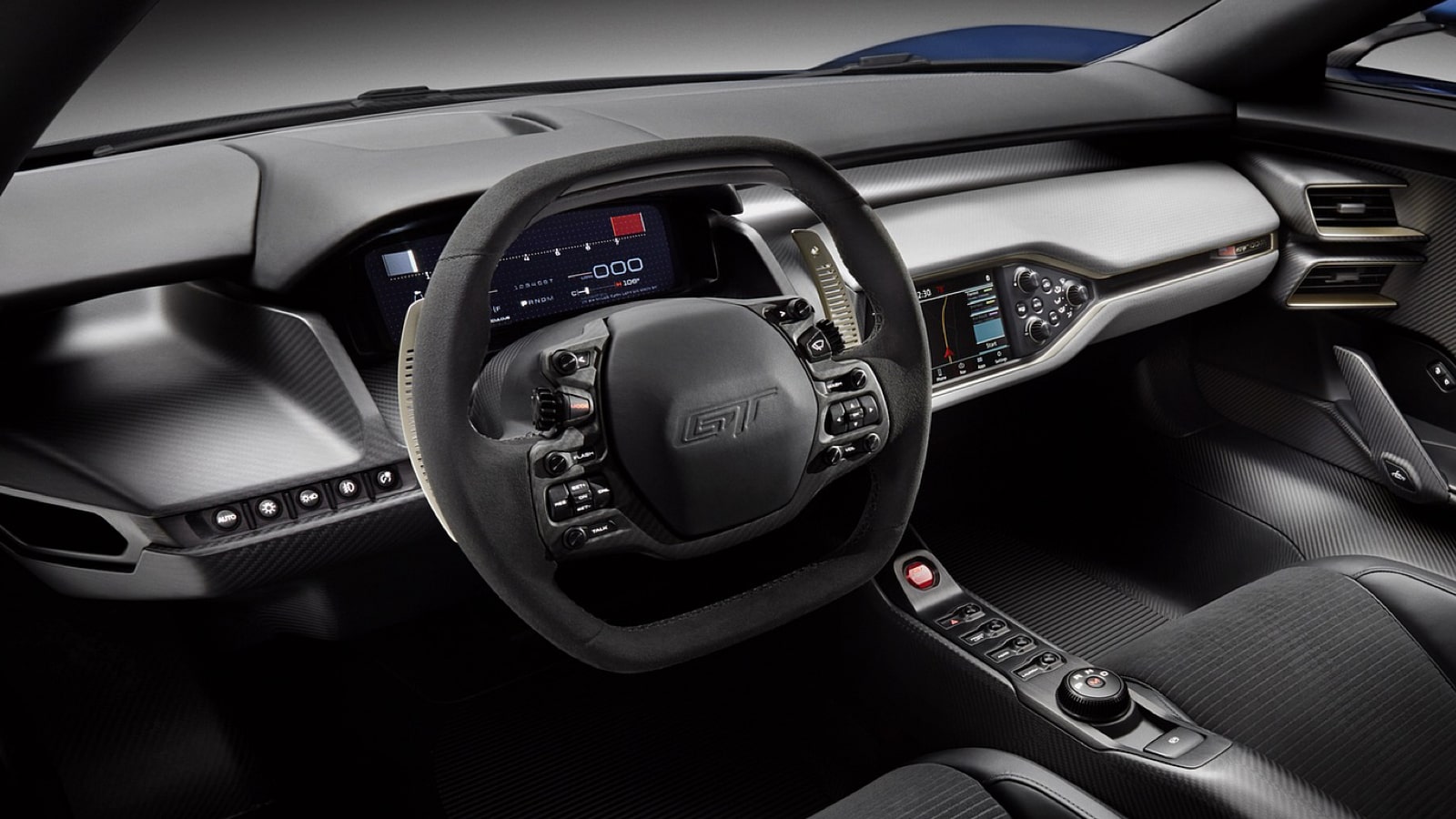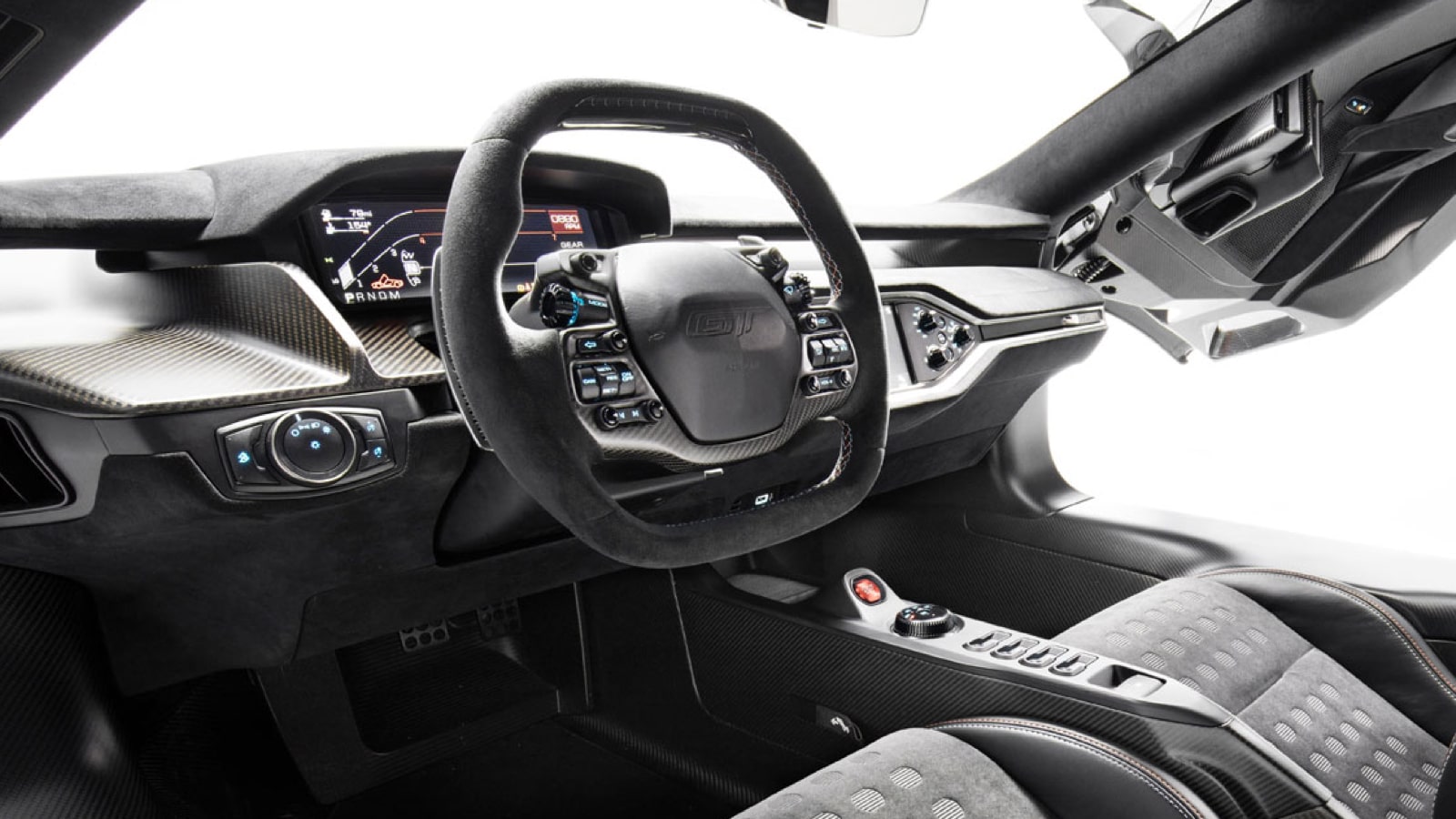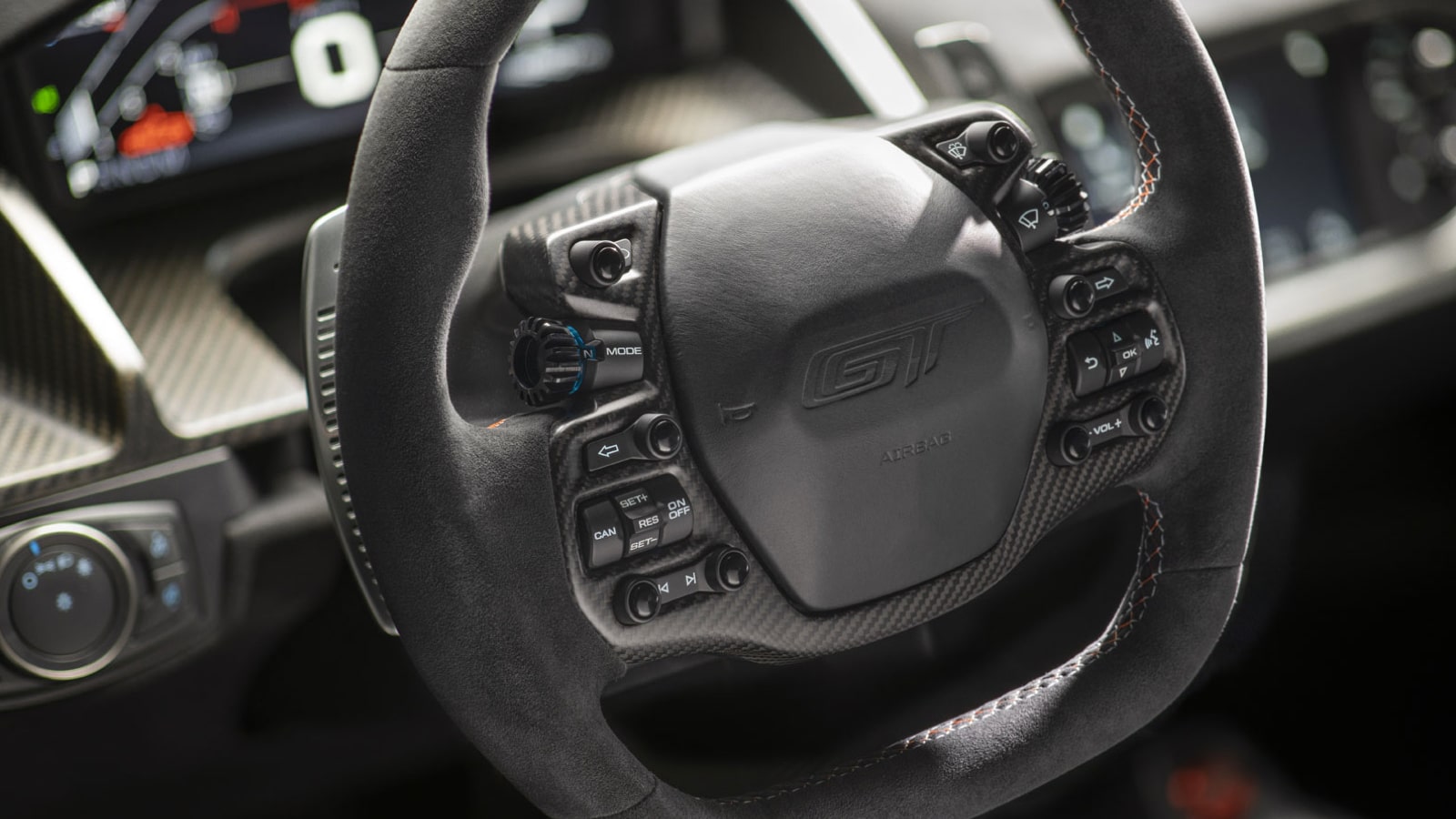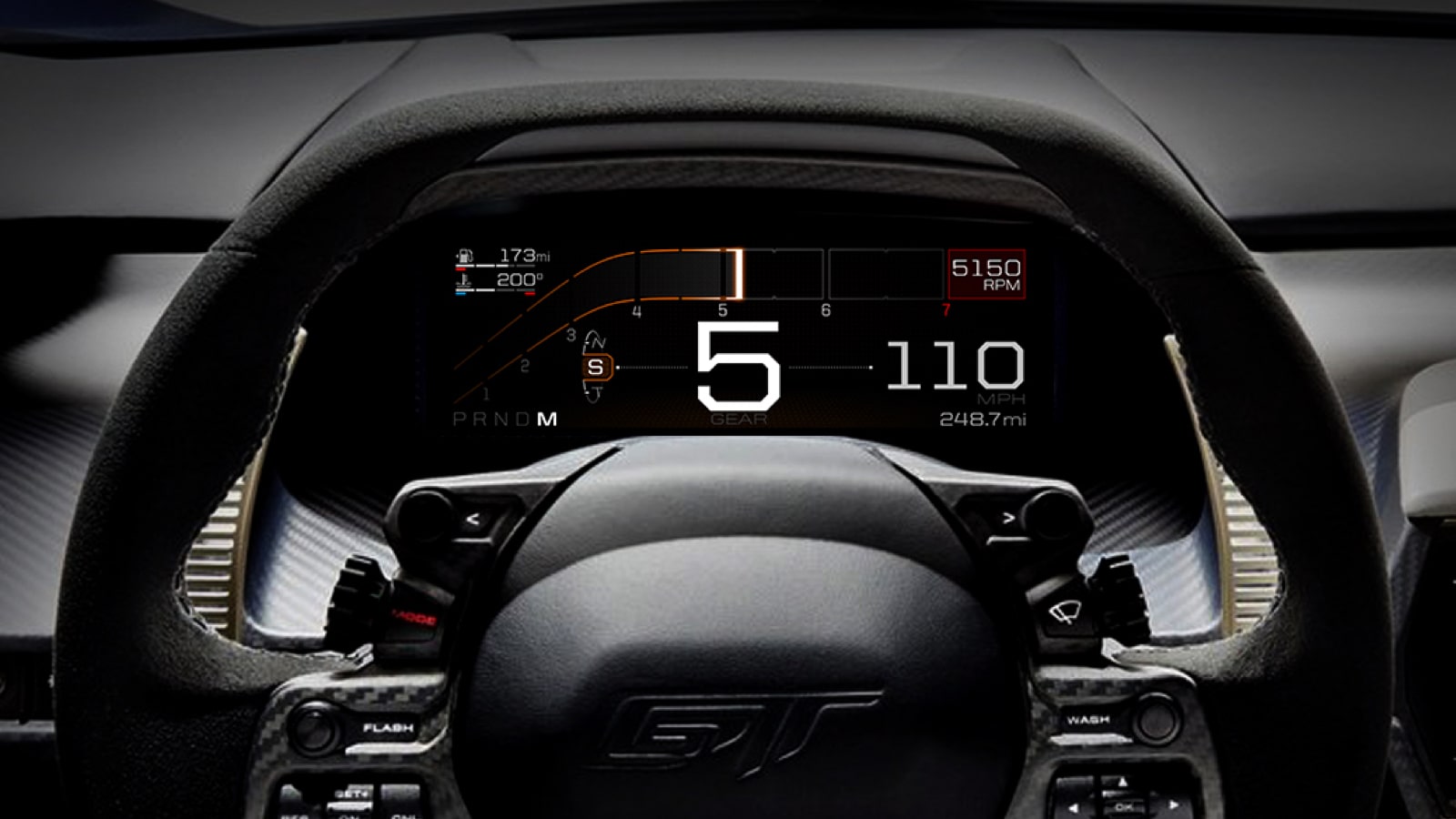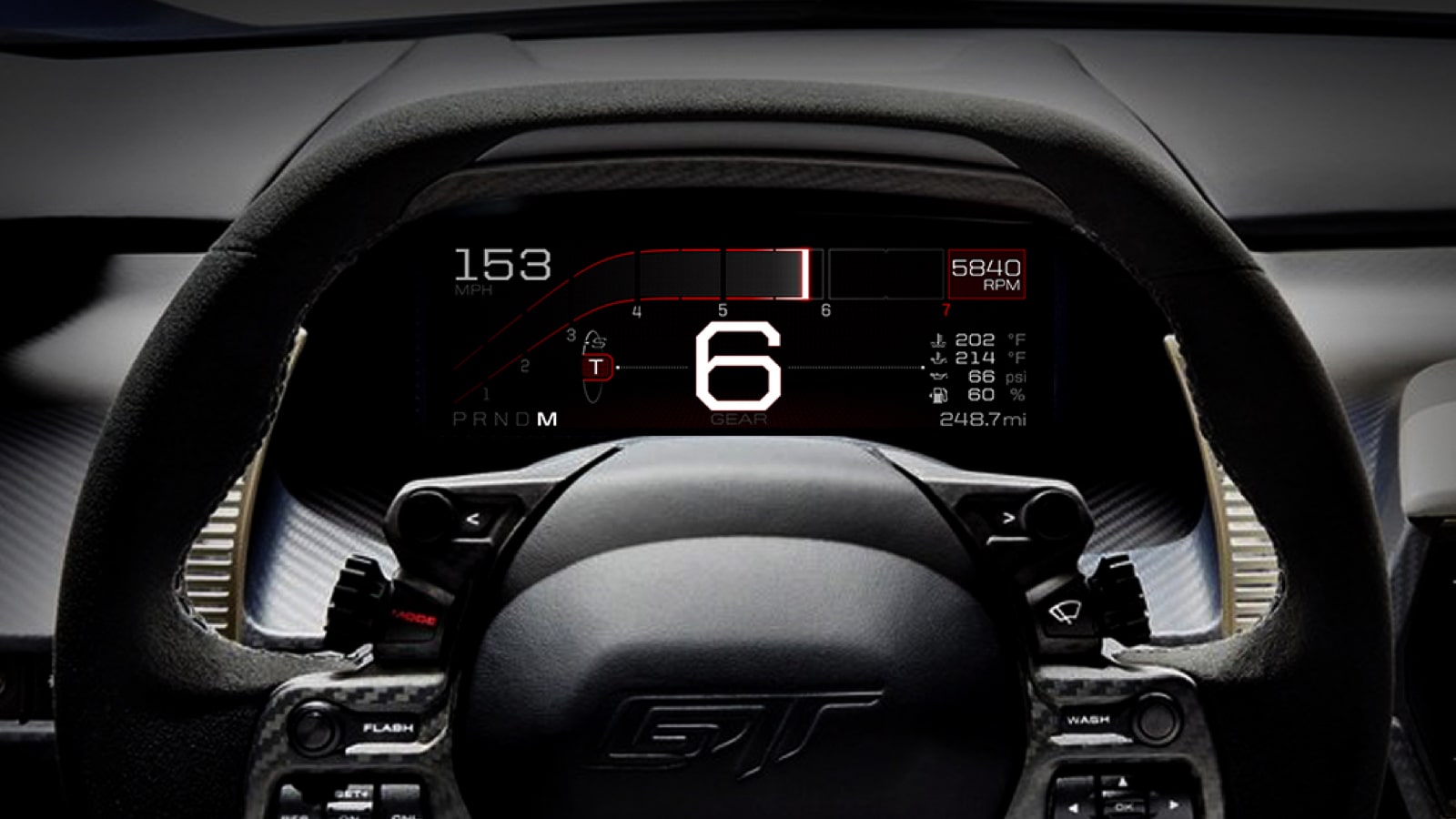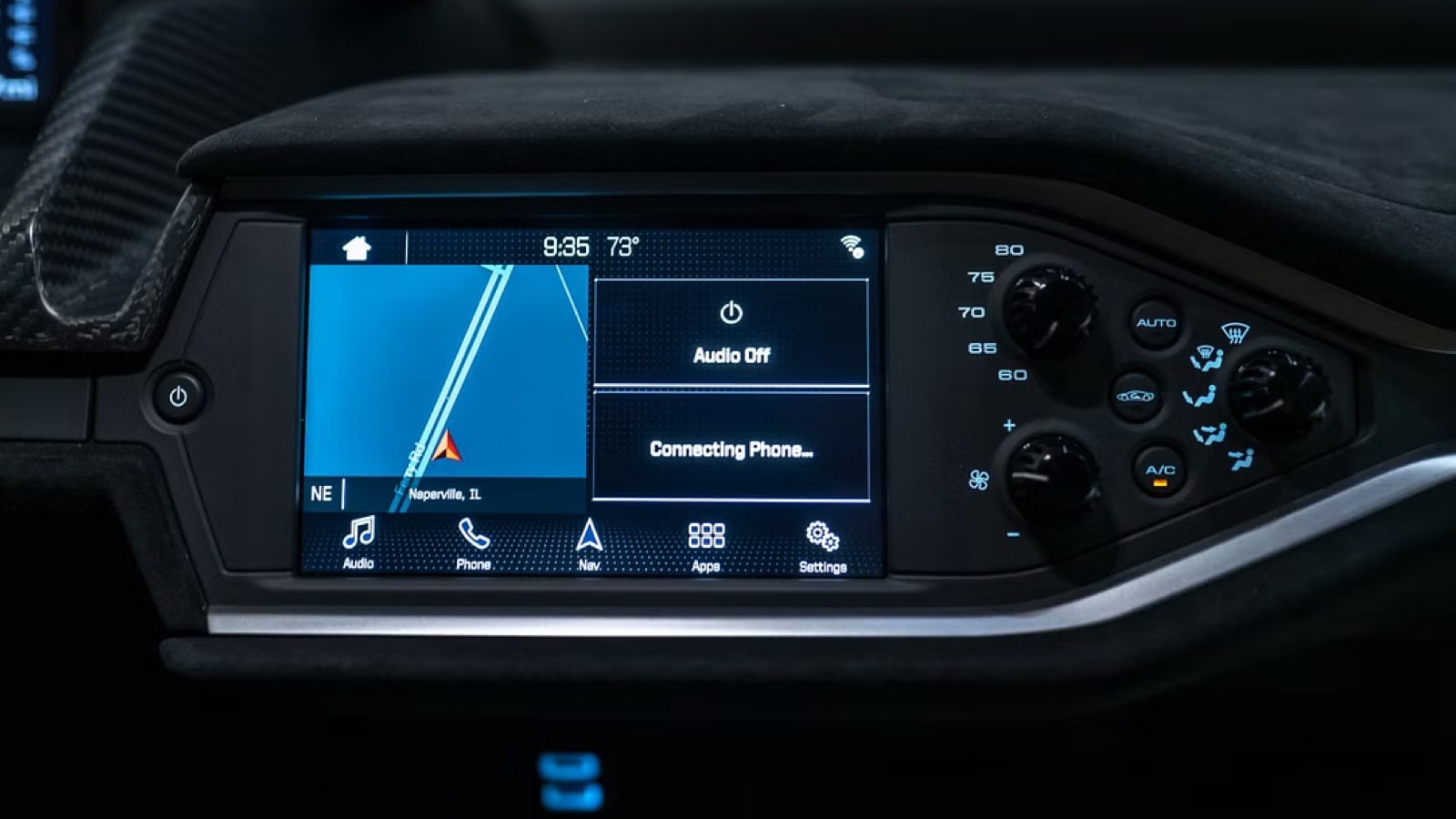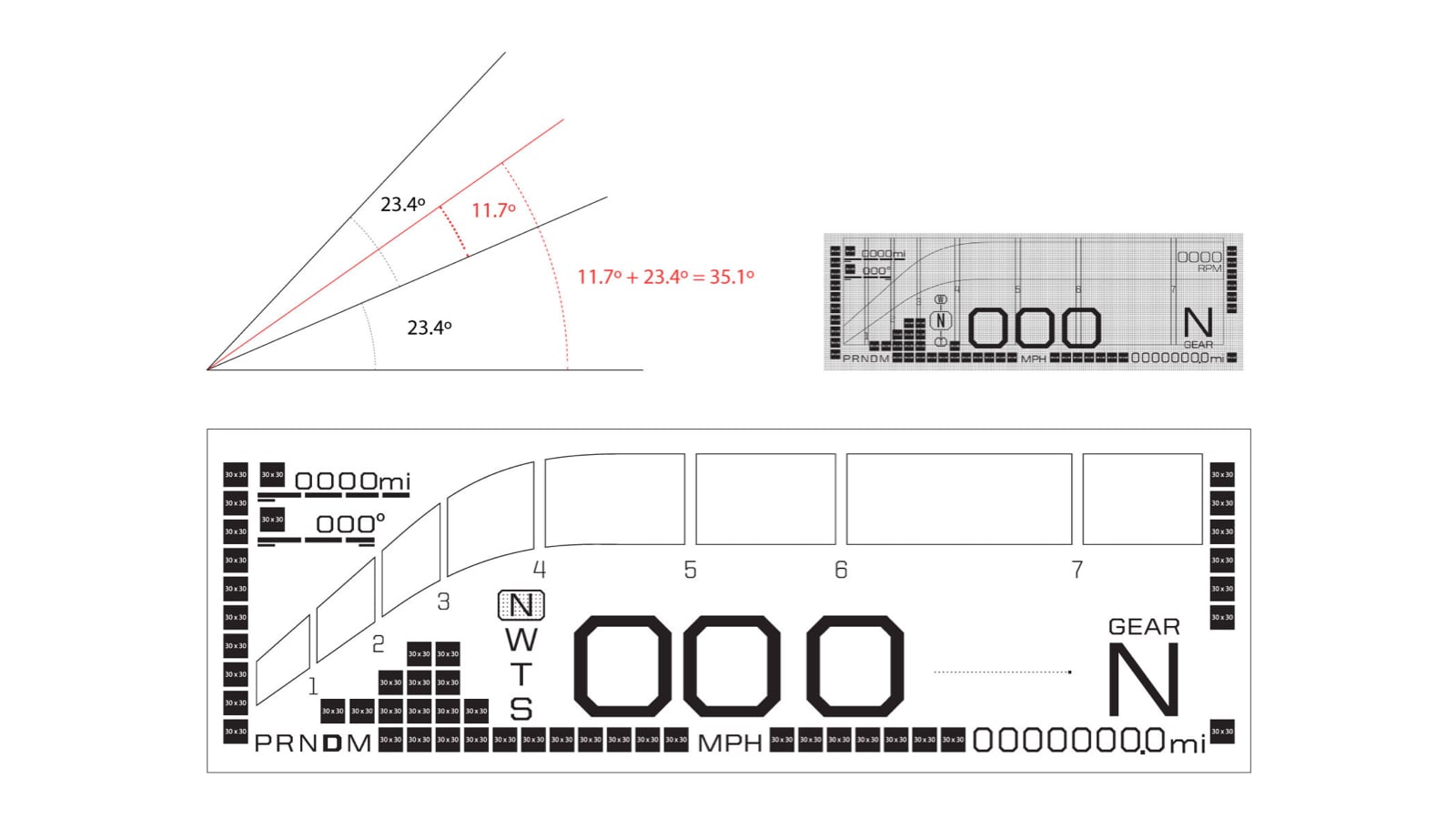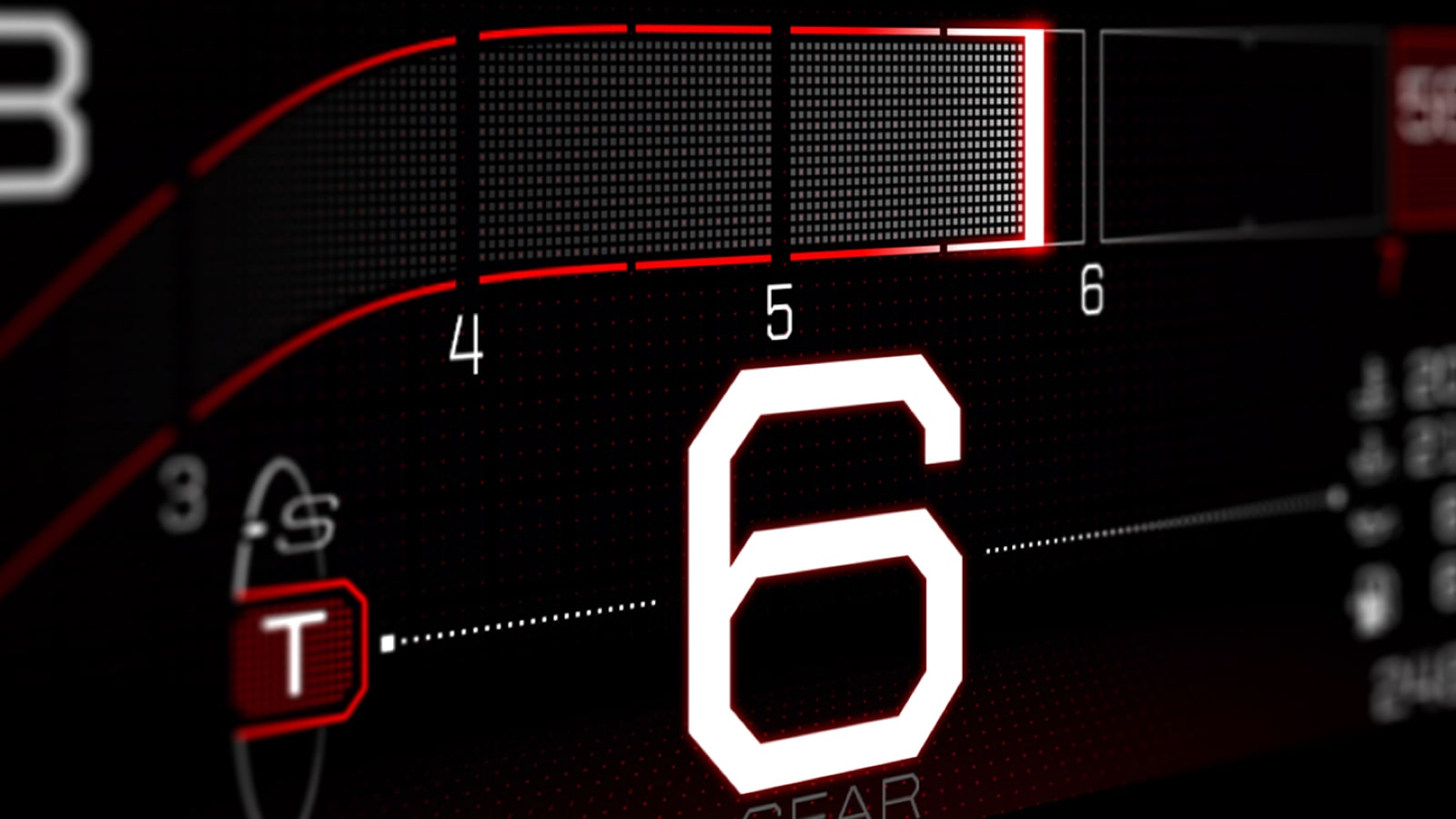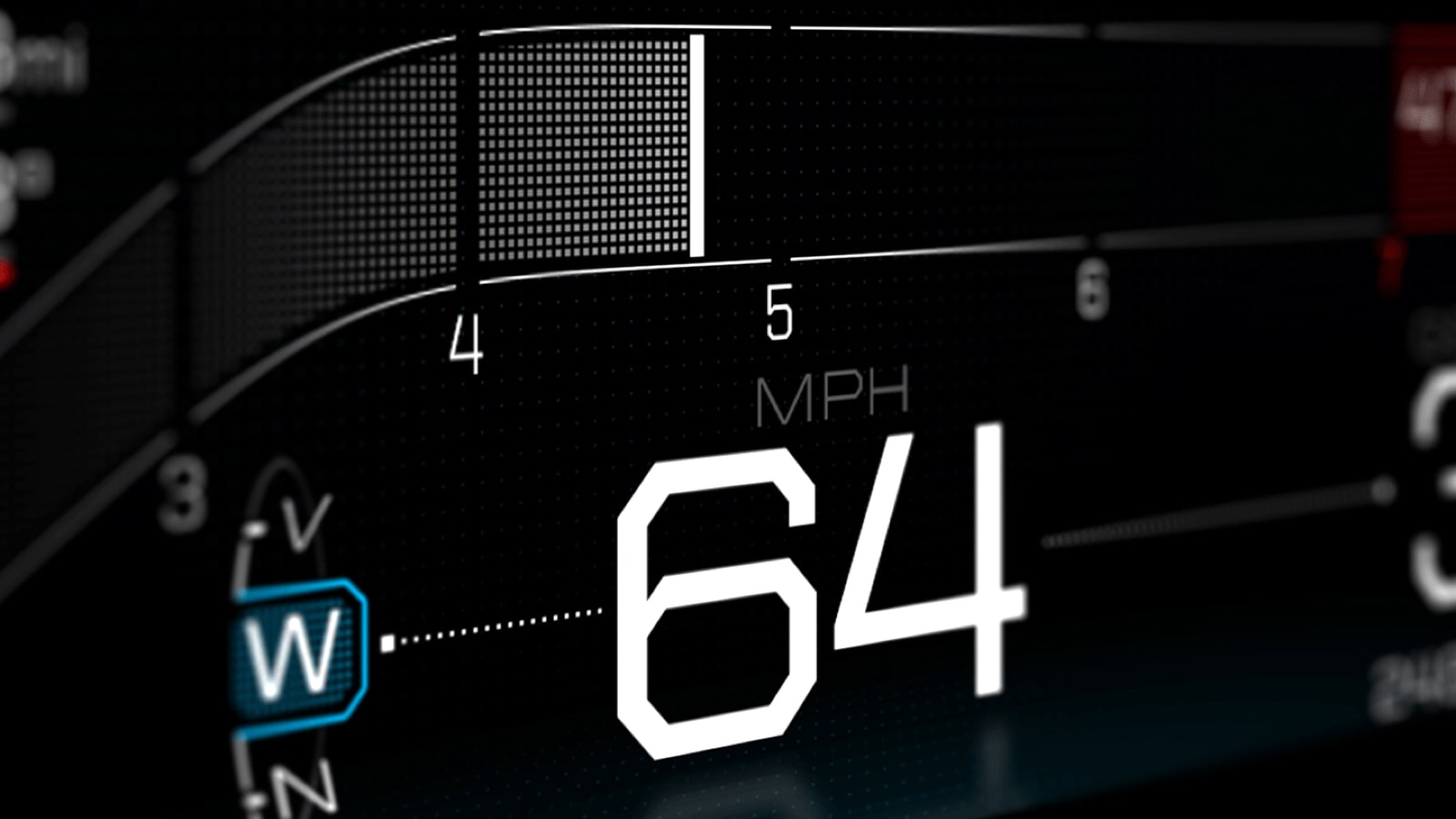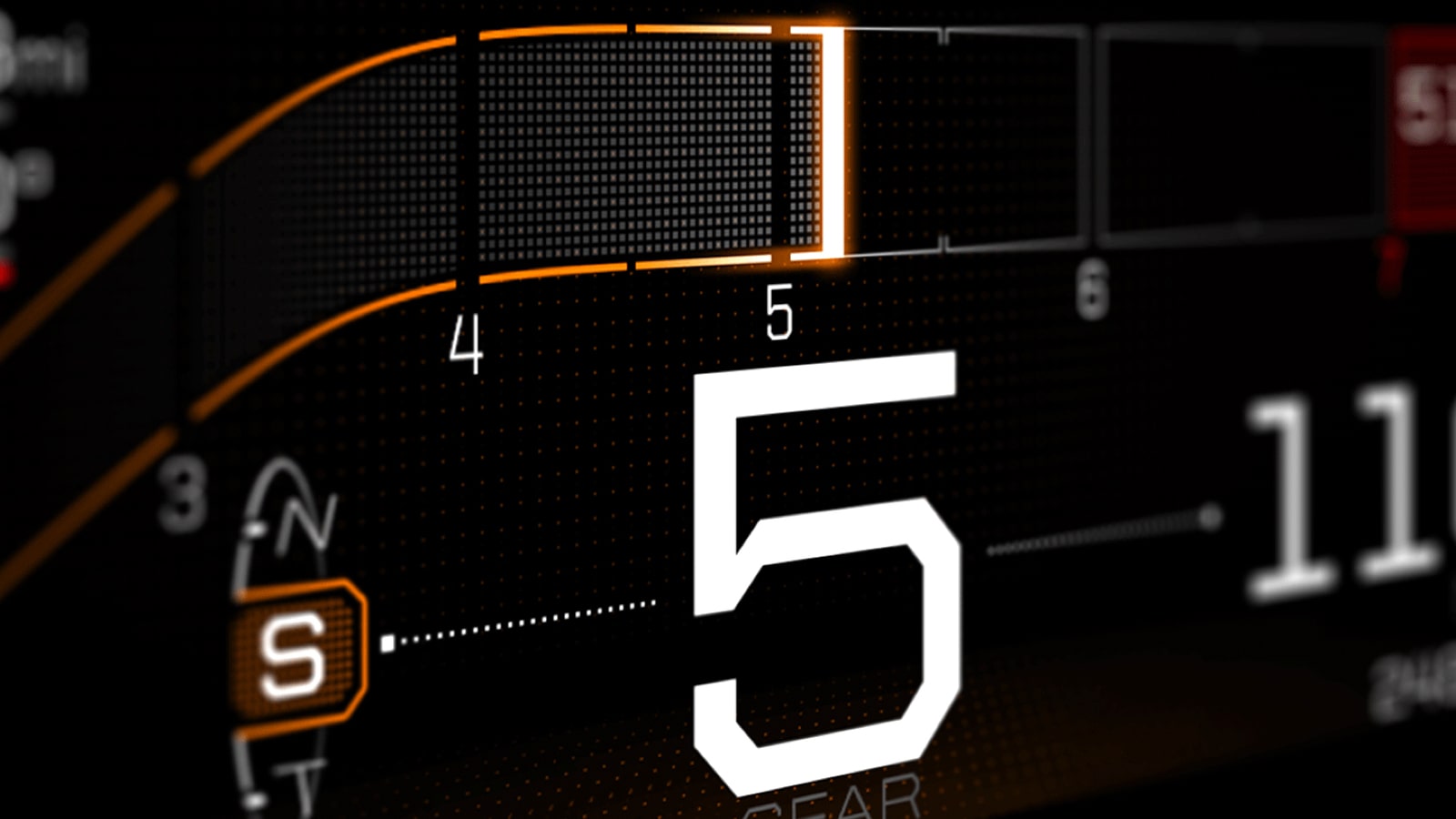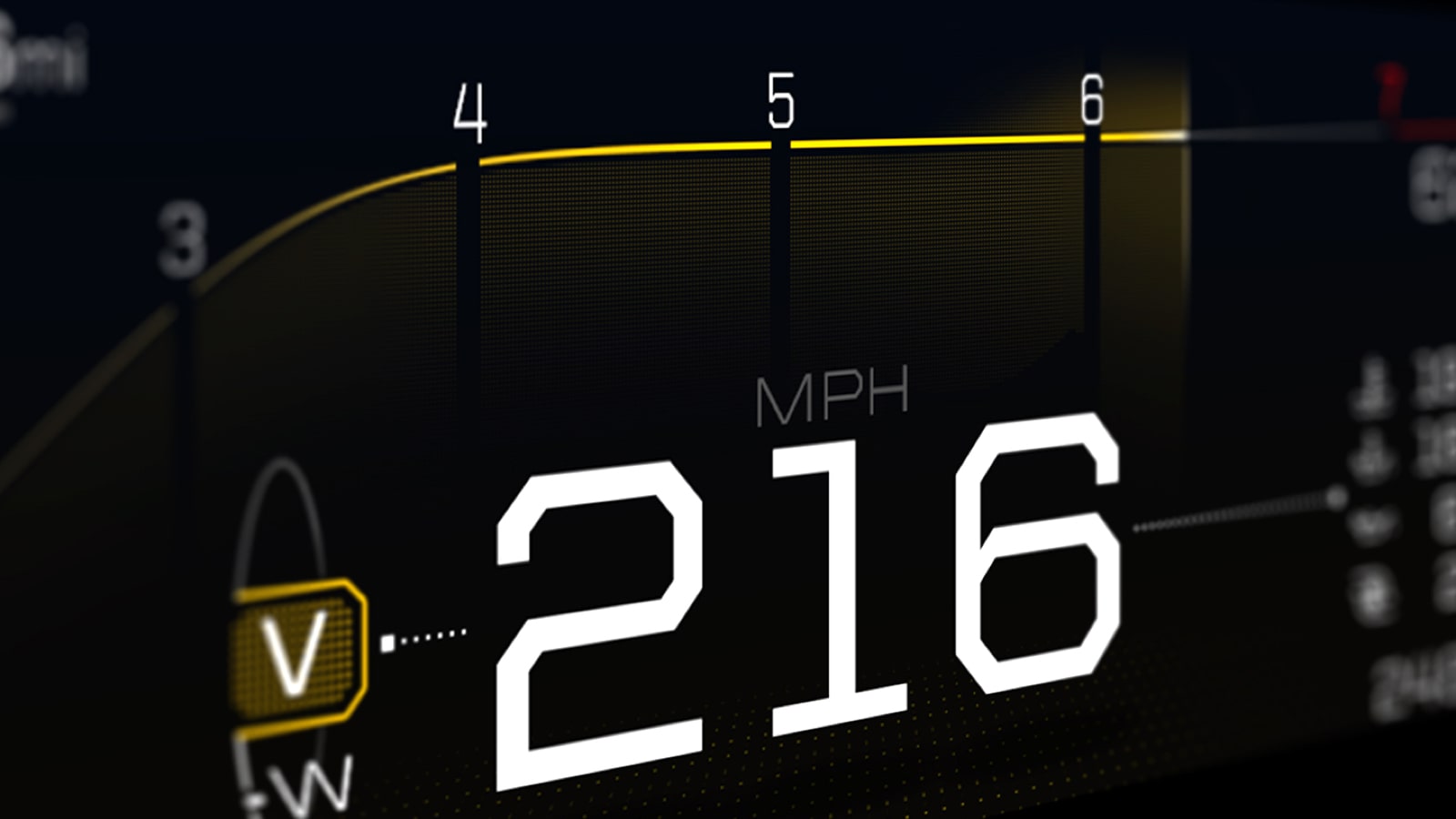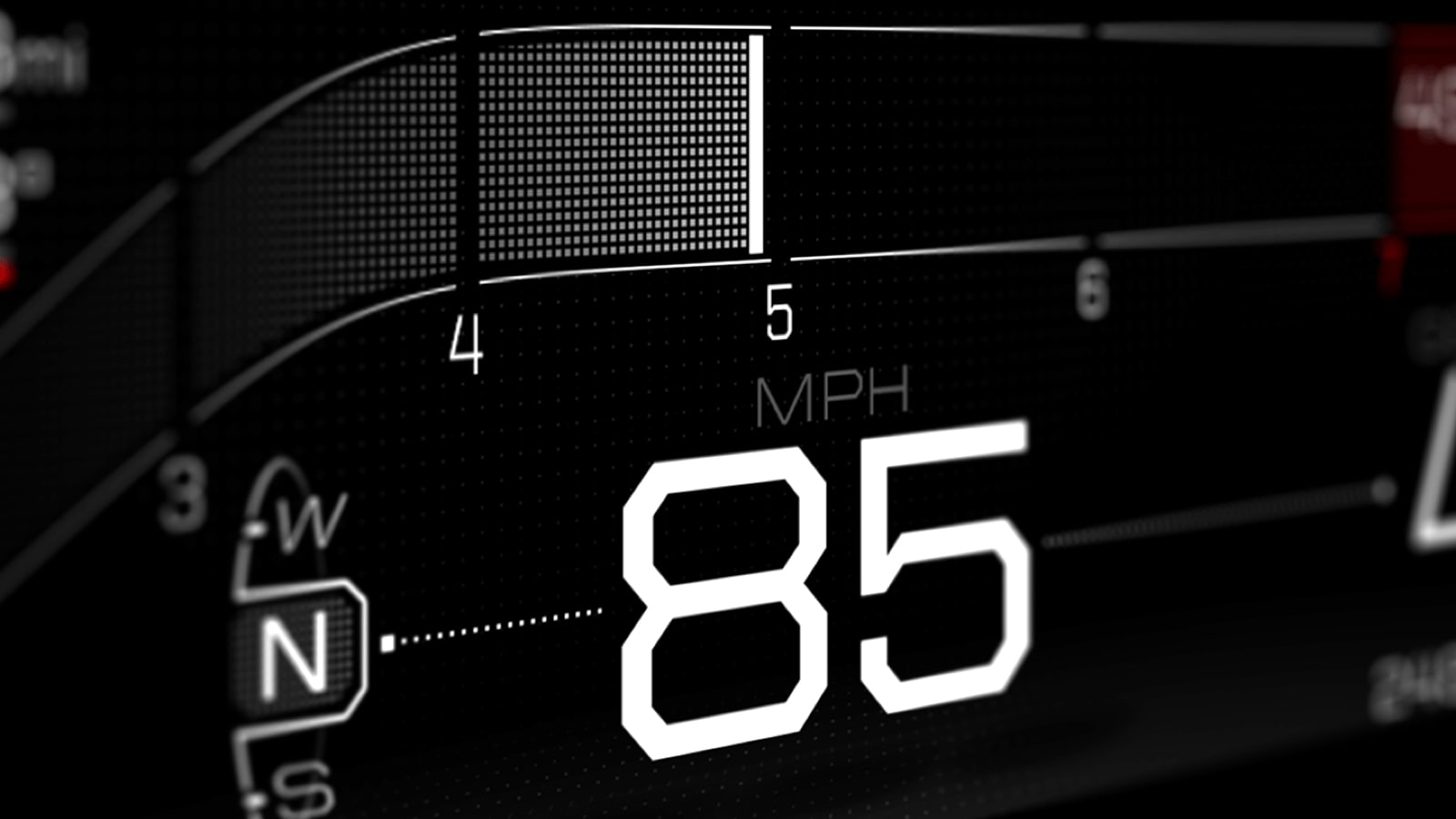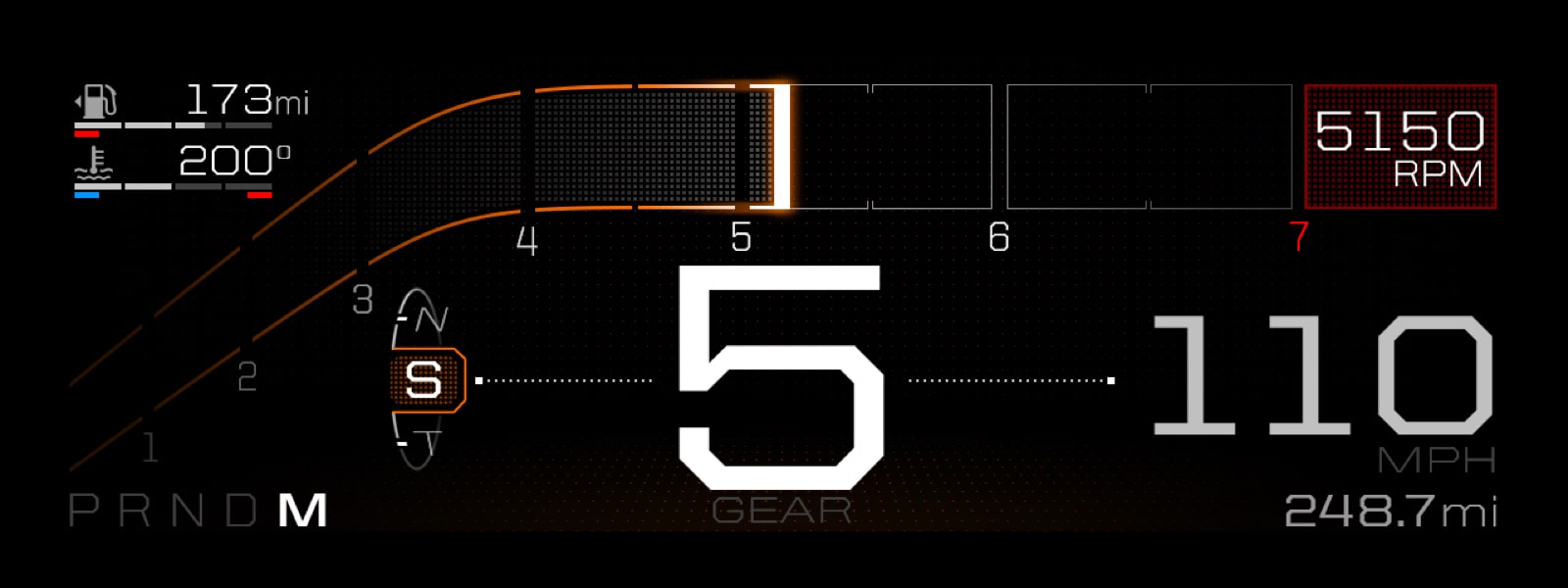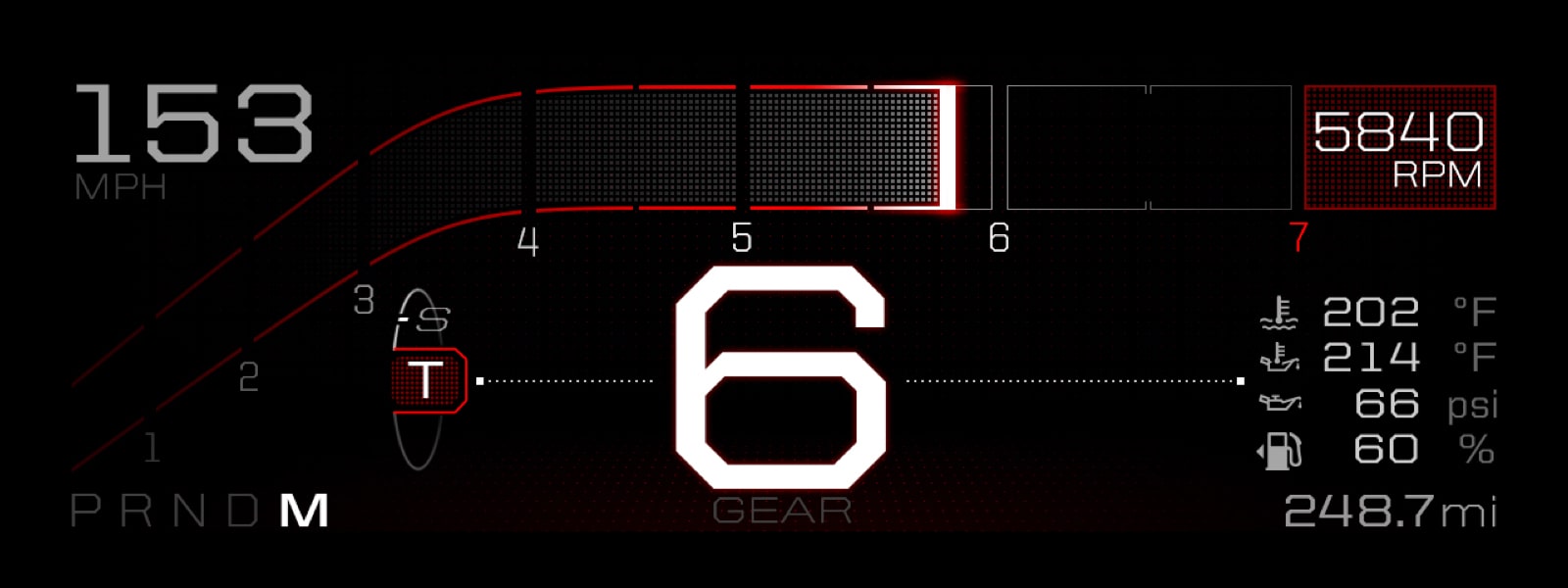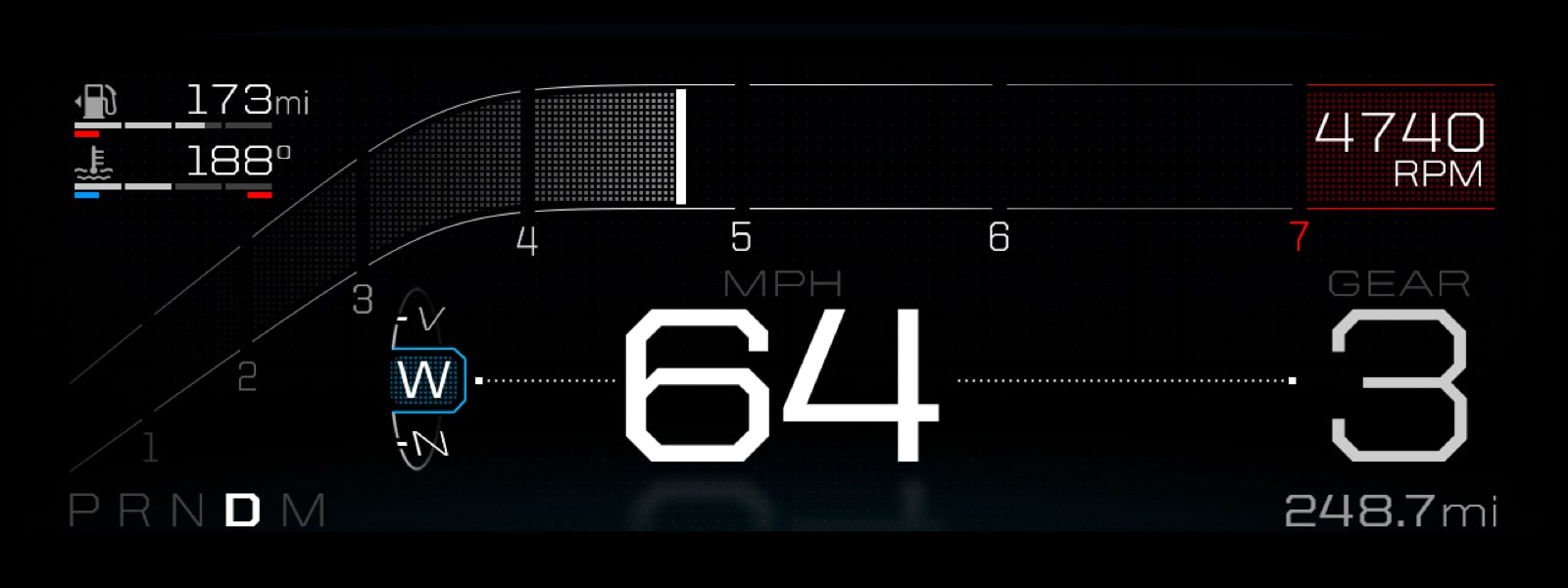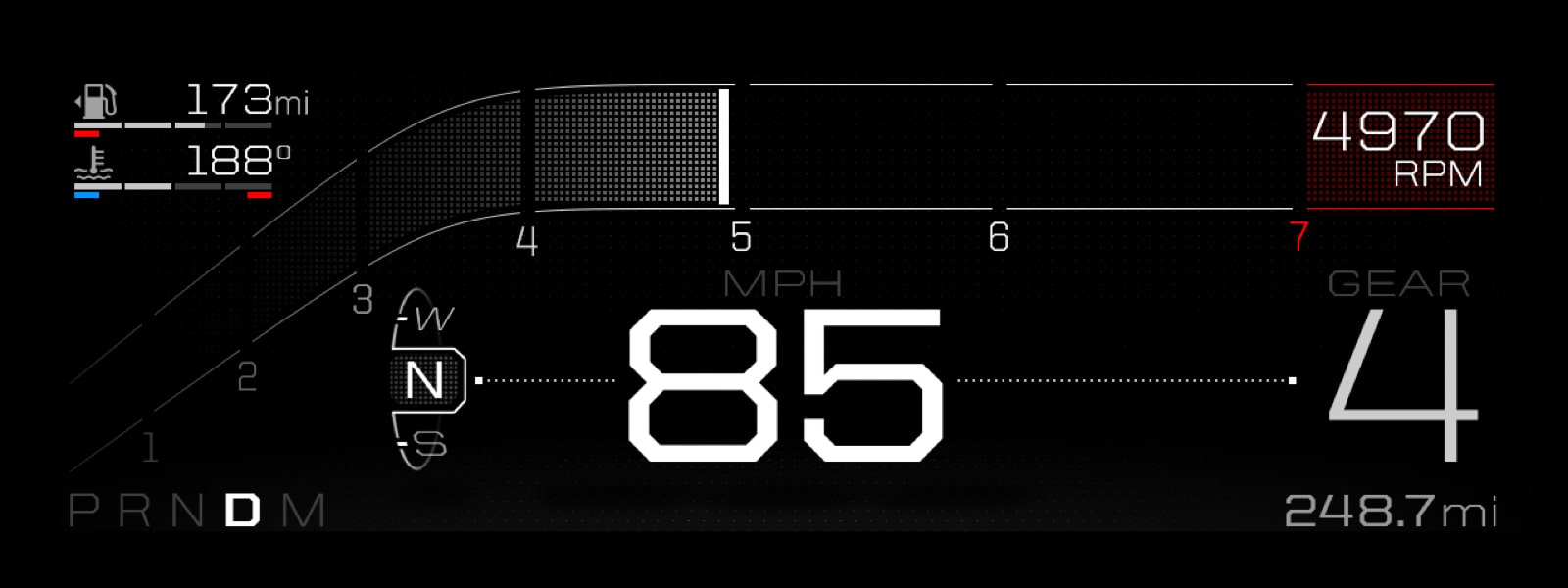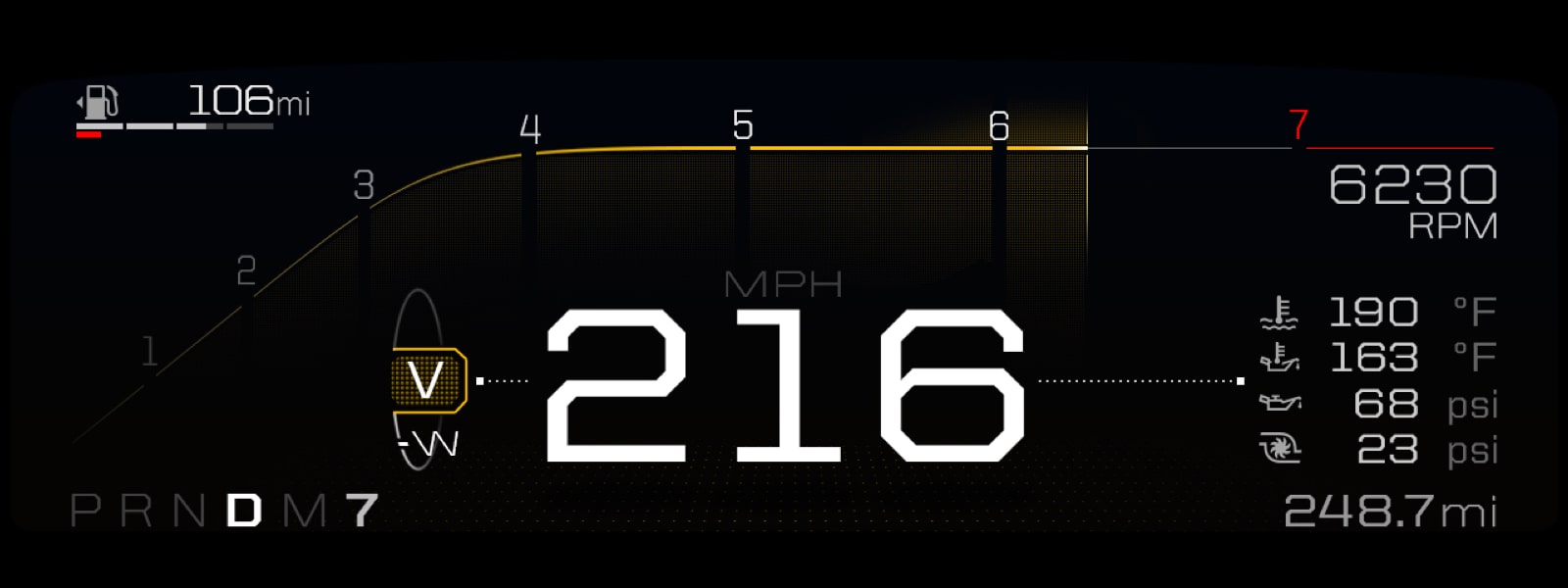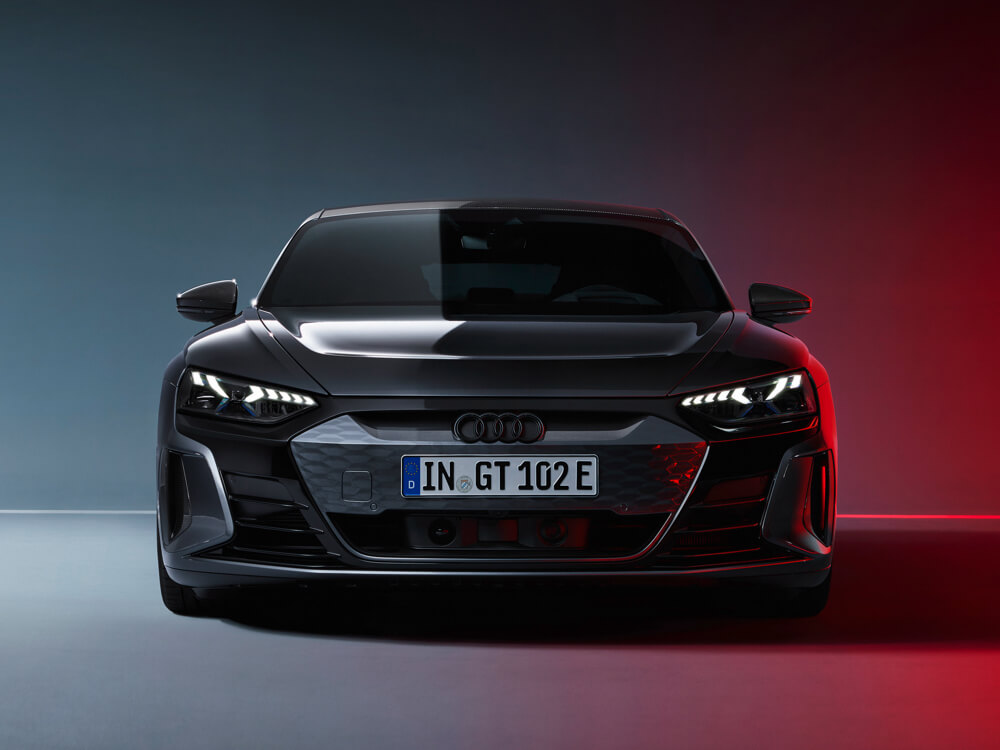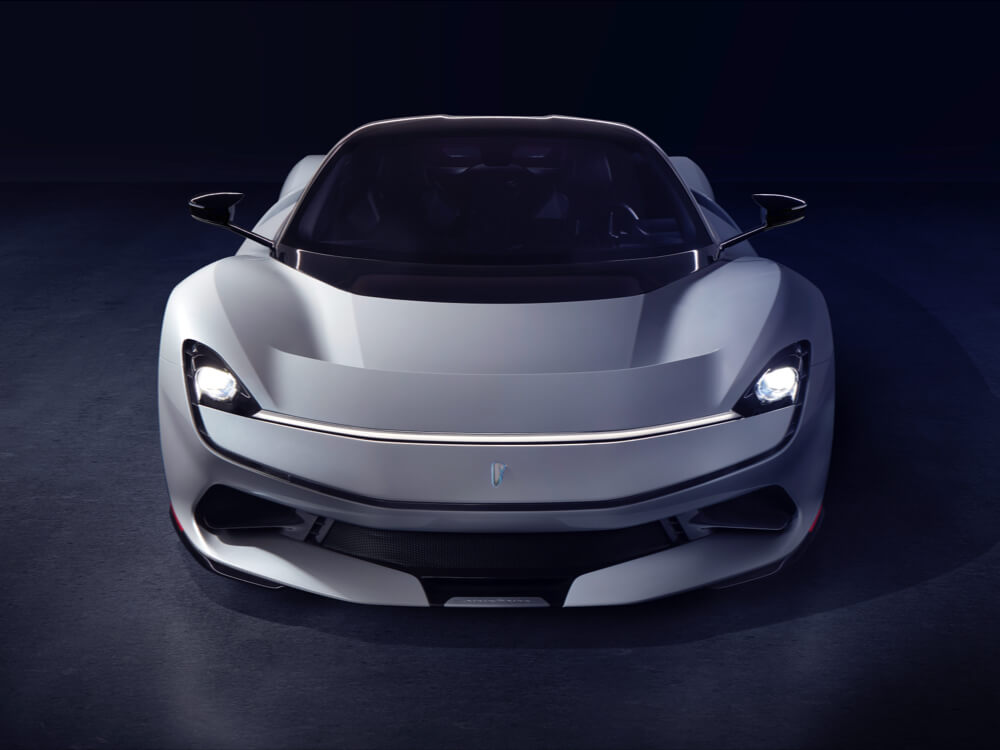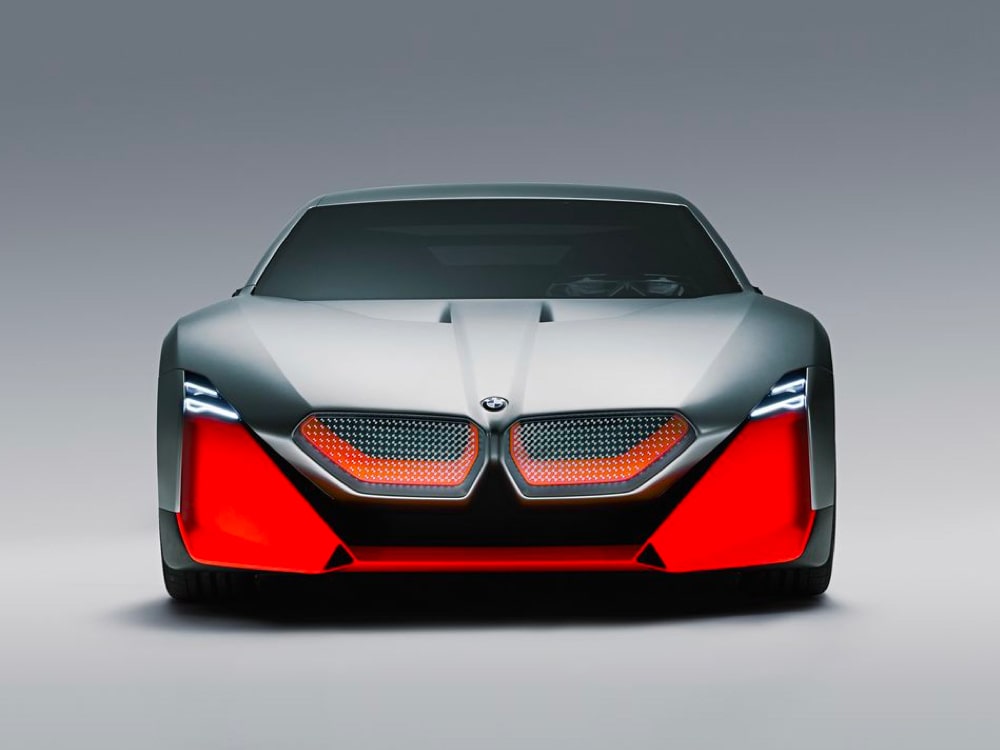Ford GT HMI
HMI Design
Ford GT HMI Details
Driver focus and control are key when it comes to creating a high performance vehicle designed to be driven to its limits (or the drivers limits) on road and track. This means one interface just won’t do. Ford engineers and designers created a state-of-the-art 10-inch wide digital gauge cluster that’s customisable, each mode is tailored to a specific driving style and environment and we can sleep easy as the default views have been set up by real racing drivers. Le Mans winner Scott Maxwell was brought in to test the design where he made a few changes, reprioritising certain performance information.
The designers and engineers at Ford worked closely with Pektron (for electronic design, development, implementation and manufacture) and Conjure (for graphical design) to create forward-looking renderings that are painstakingly animated, include highlighted font, color and responsiveness, and avoid driver distraction and eye strain. The five drive modes are quickly accessed through steering wheel-mounted controls, to help keep attention on the road and hands on the wheel.
This is how the five driver modes in the Ford GT are structured:
- Normal mode displays information in a purposeful, businesslike manner. The theme is simple; the speedometer is centered and bold, gear selection is to the right, fuel and temperature are top left. The hockey-stick-shaped tachometer displays in a compressed scale for lower rpm, as the engine revs so quickly the lower counts mean almost nothing to the driver. The 3,000-to-7,000-rpm range dominates the top of the display
- Wet mode carries many of the same information concepts over from normal mode, using a blue theme and a “wet floor” concept. Graphics under the speedometer emulate the shine of wet asphalt to remind the driver of the mode selection.
- Sport mode adjusts information priorities. Front and center is gear selection, with the speedometer off to the right and less prominent. It’s displayed in an aggressive orange theme and is the preferred mode for most test drivers
- Track mode presents a stark combination of black background and highly legible text and graphics, in a crisp, red theme that’s easy for the eye to pick up in a fast-paced environment. Gear selection and engine speed are displayed prominently, while coolant temperature, oil pressure, oil temperature and fuel level – rendered as a percentage rather than miles to empty – are bottom right
- V-Max offers an entirely different display – purposeful and pared down. Specifically tailored to pursuing maximum top speed, it displays a large, centered speedometer, with tachometer reduced to just a line with indicator dot for minimal distraction. Coolant temperature, oil pressure, oil temperature and turbocharger boost are displayed to the right, with fuel level displayed top left
HMI Gallery
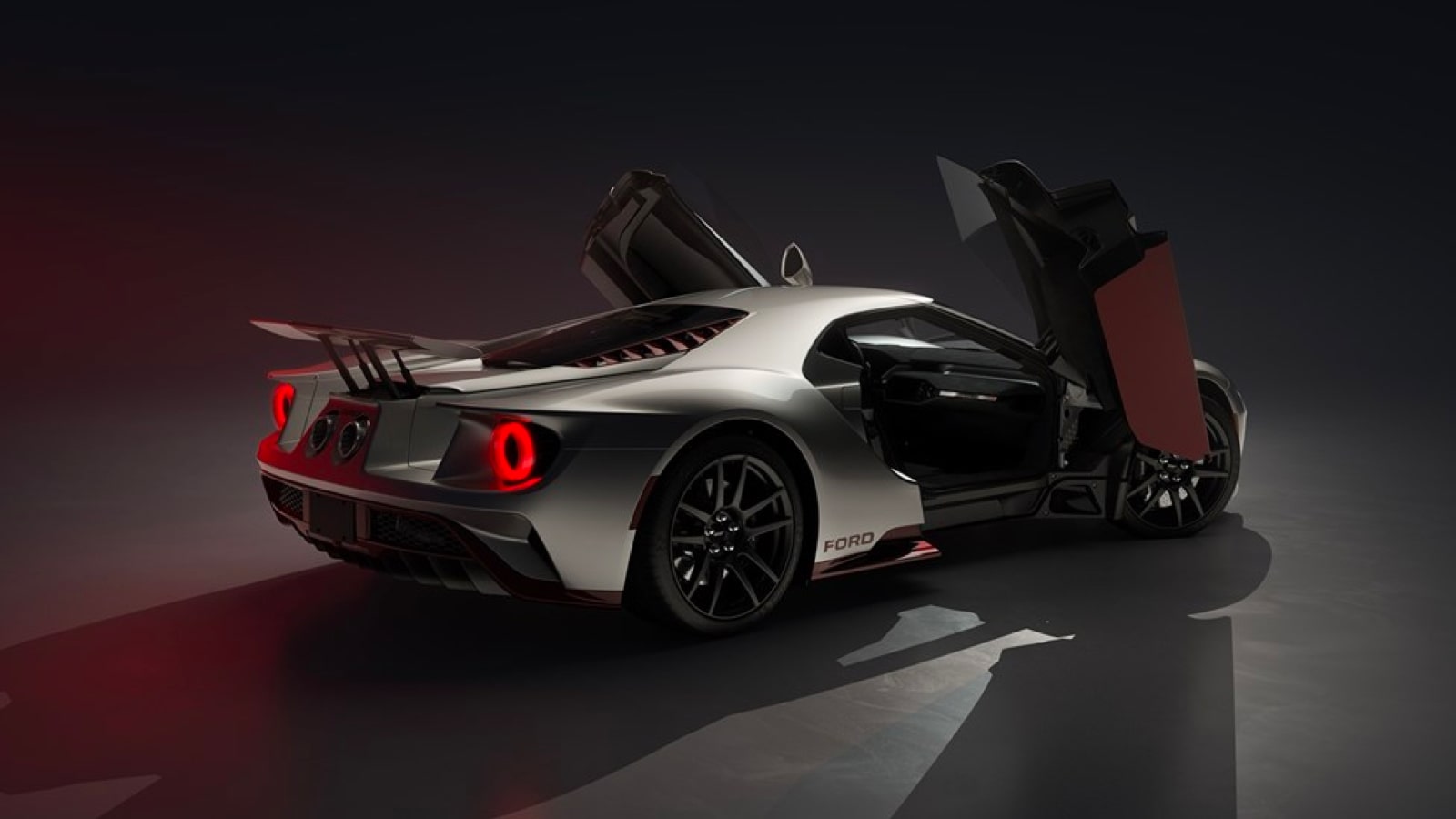
Image source: media.ford.com
Videos
Related Articles
More HMI Case Studies
Connect with us
HMI Gallery is a collection of case studies showcasing the features, functionality, fonts and iconography of digital interface design in high performance vehicles.
Curated by Ben Morris
Digital Creative

